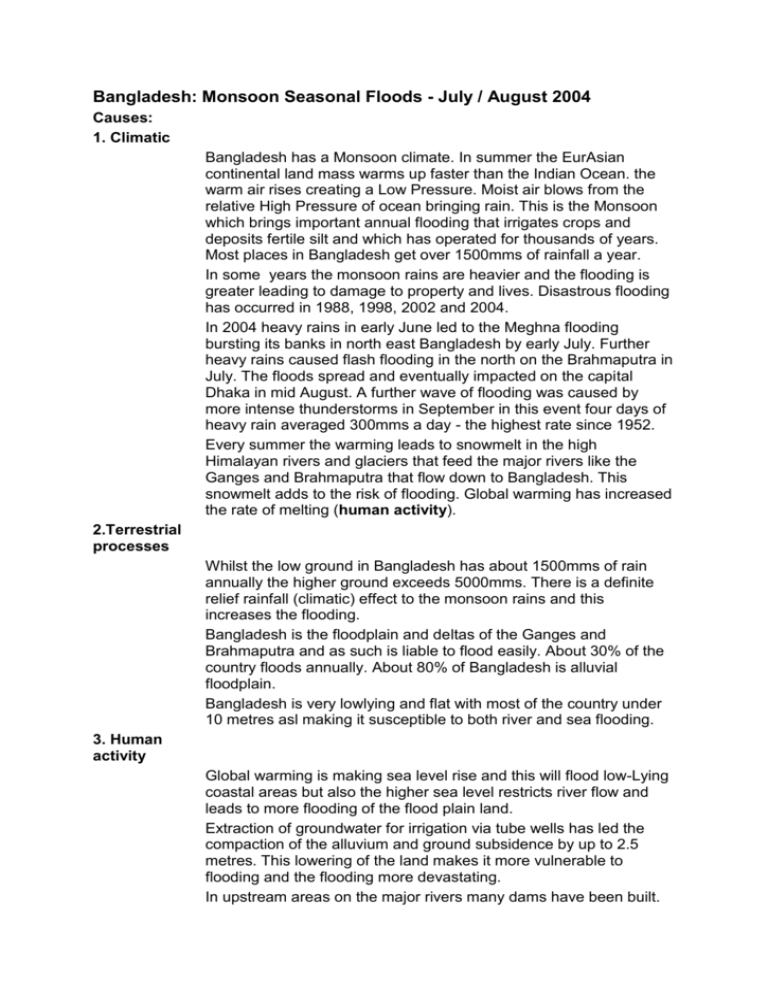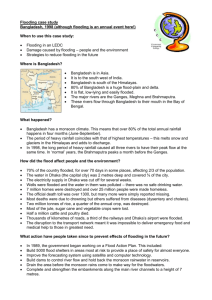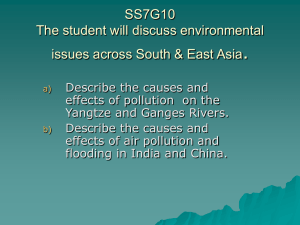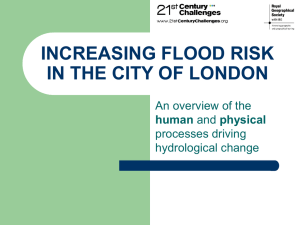Bangladesh 2004 Causes
advertisement

Bangladesh: Monsoon Seasonal Floods - July / August 2004 Causes: 1. Climatic Bangladesh has a Monsoon climate. In summer the EurAsian continental land mass warms up faster than the Indian Ocean. the warm air rises creating a Low Pressure. Moist air blows from the relative High Pressure of ocean bringing rain. This is the Monsoon which brings important annual flooding that irrigates crops and deposits fertile silt and which has operated for thousands of years. Most places in Bangladesh get over 1500mms of rainfall a year. In some years the monsoon rains are heavier and the flooding is greater leading to damage to property and lives. Disastrous flooding has occurred in 1988, 1998, 2002 and 2004. In 2004 heavy rains in early June led to the Meghna flooding bursting its banks in north east Bangladesh by early July. Further heavy rains caused flash flooding in the north on the Brahmaputra in July. The floods spread and eventually impacted on the capital Dhaka in mid August. A further wave of flooding was caused by more intense thunderstorms in September in this event four days of heavy rain averaged 300mms a day - the highest rate since 1952. Every summer the warming leads to snowmelt in the high Himalayan rivers and glaciers that feed the major rivers like the Ganges and Brahmaputra that flow down to Bangladesh. This snowmelt adds to the risk of flooding. Global warming has increased the rate of melting (human activity). 2.Terrestrial processes Whilst the low ground in Bangladesh has about 1500mms of rain annually the higher ground exceeds 5000mms. There is a definite relief rainfall (climatic) effect to the monsoon rains and this increases the flooding. Bangladesh is the floodplain and deltas of the Ganges and Brahmaputra and as such is liable to flood easily. About 30% of the country floods annually. About 80% of Bangladesh is alluvial floodplain. Bangladesh is very lowlying and flat with most of the country under 10 metres asl making it susceptible to both river and sea flooding. 3. Human activity Global warming is making sea level rise and this will flood low-Lying coastal areas but also the higher sea level restricts river flow and leads to more flooding of the flood plain land. Extraction of groundwater for irrigation via tube wells has led the compaction of the alluvium and ground subsidence by up to 2.5 metres. This lowering of the land makes it more vulnerable to flooding and the flooding more devastating. In upstream areas on the major rivers many dams have been built. These dams trap silt and thus it is no longer deposited on the flood plain in Bangledesh. Bangladesh is densely populated with over 140 million people and all land areas are occupied. This includes sandbanks called Chars in the river channels and without additional silt they are subject to erosion and flooding. Increased urbanisation has led to higher peak flows and shorter lags with more flooding. Dhaka now has over 6 million inhabitants. In Himalayan countries like Nepal rapid population growth puts more pressure on the land. Deforestation and terracing of steep hillsides occurs to make more farmland. This deforestation has led to increased run-off and discharge in the rivers flowing to Bangladesh. With no leaves to intercept rainfall and with no roots to hold the soil in place rapid soil erosion and landslides occur in the Monsoon. The soil is transported by the rivers and is deposited on the lower ground blocking river channels and decreasing their capacity to store water so increasing the likelihood and depth of flooding The 2004 flood on the Brahmaputra was intensified because the Kurichu Dam on the Tsatitsu Lake in Bhutan was breached by a Glacial Lake Outburst Flood. This dam burst added to the monsoon rain discharge intensifying the early July floods.










